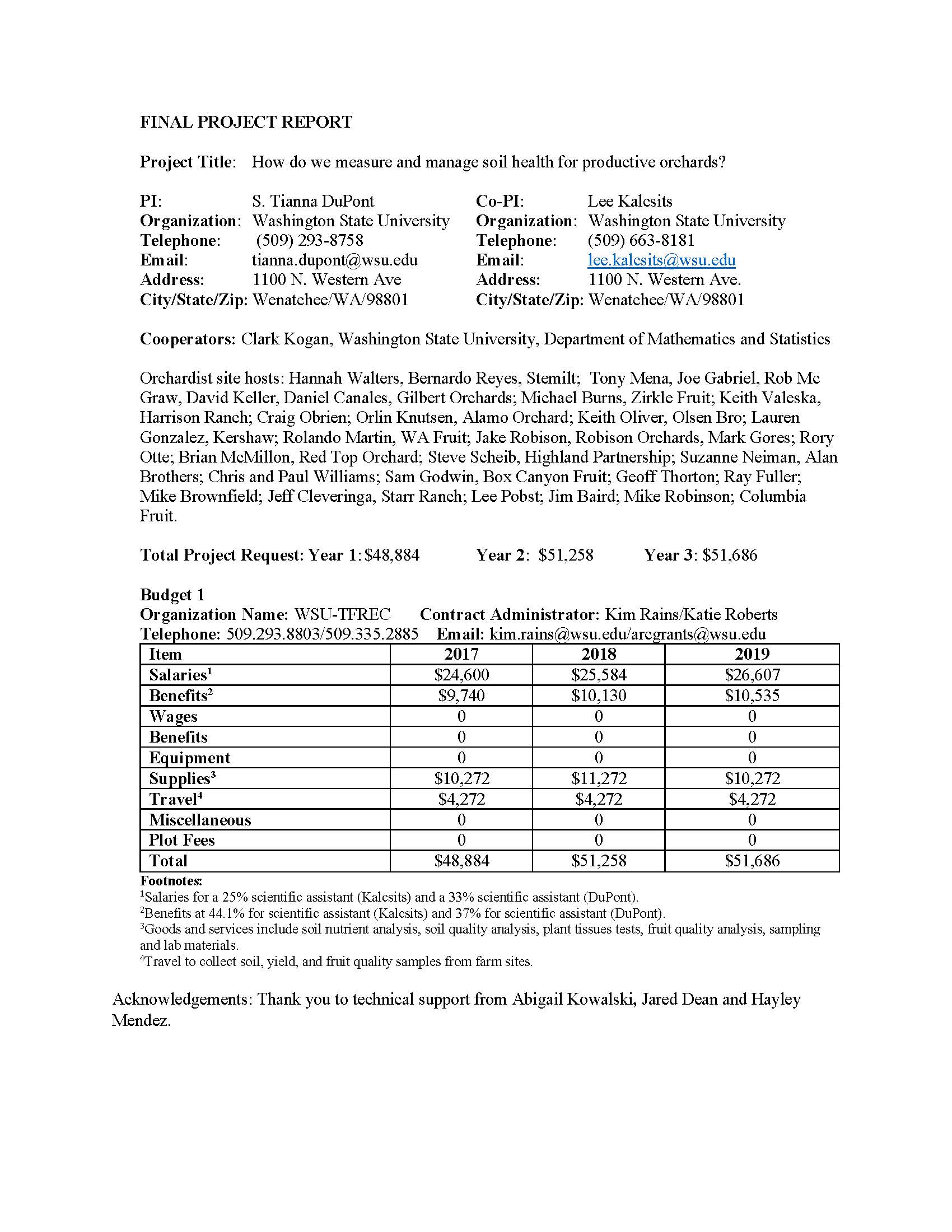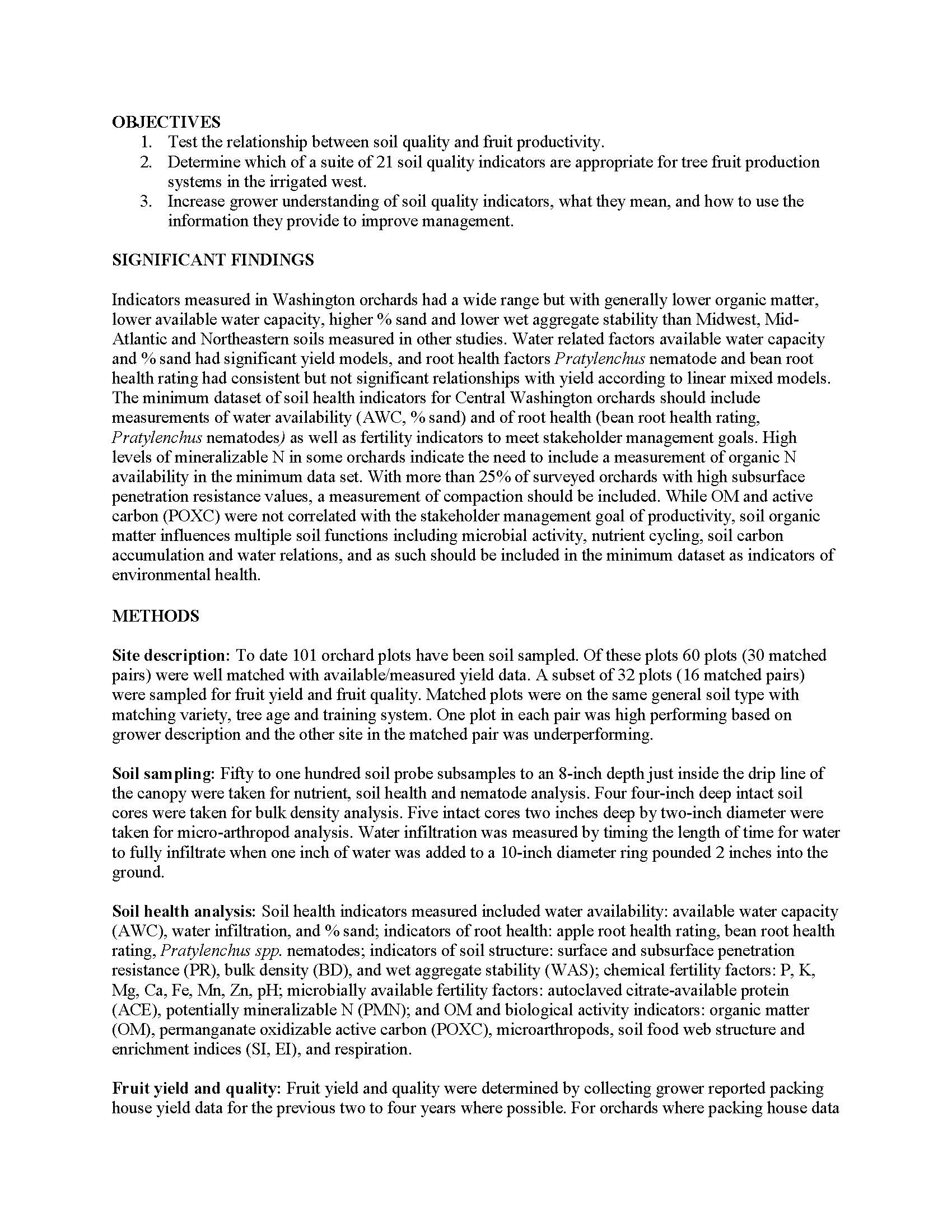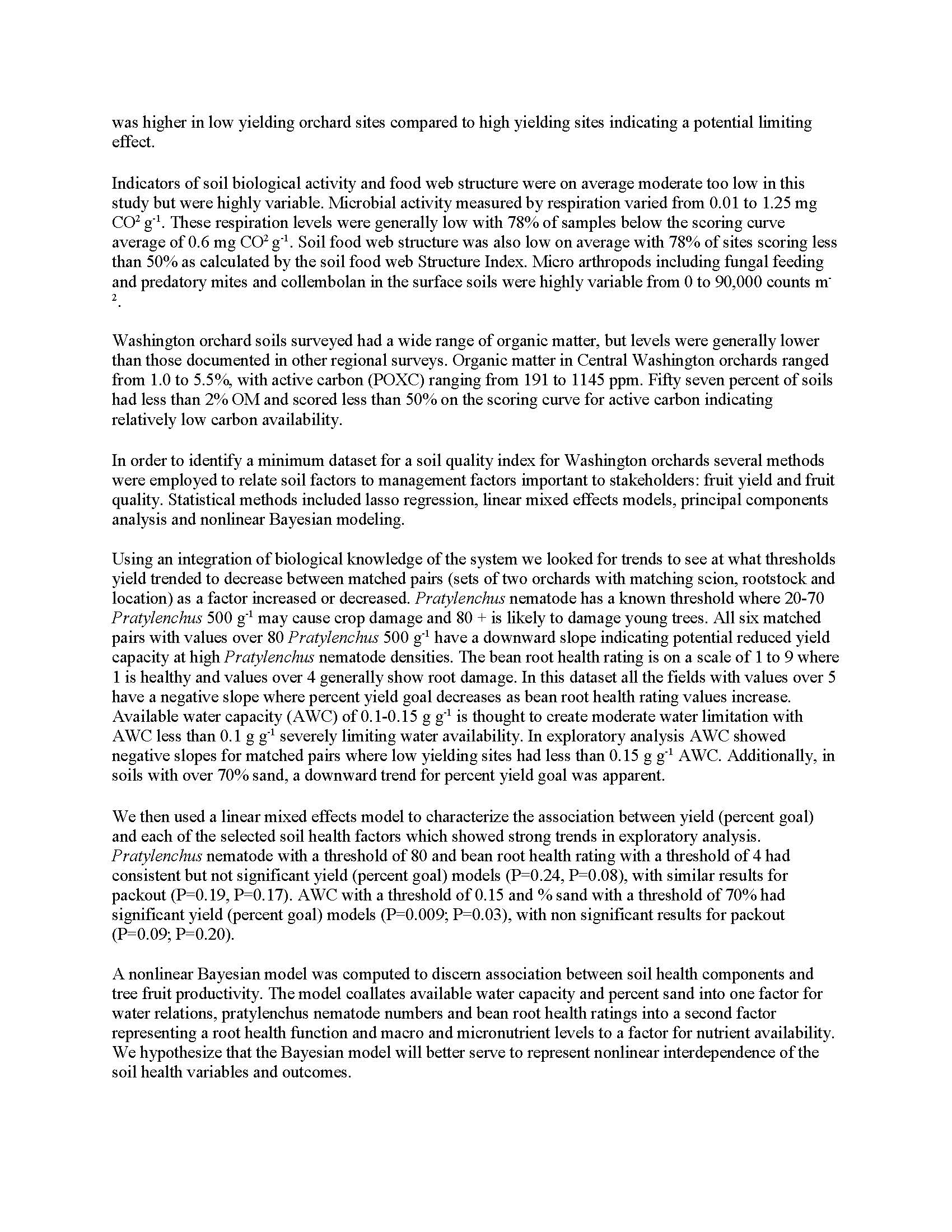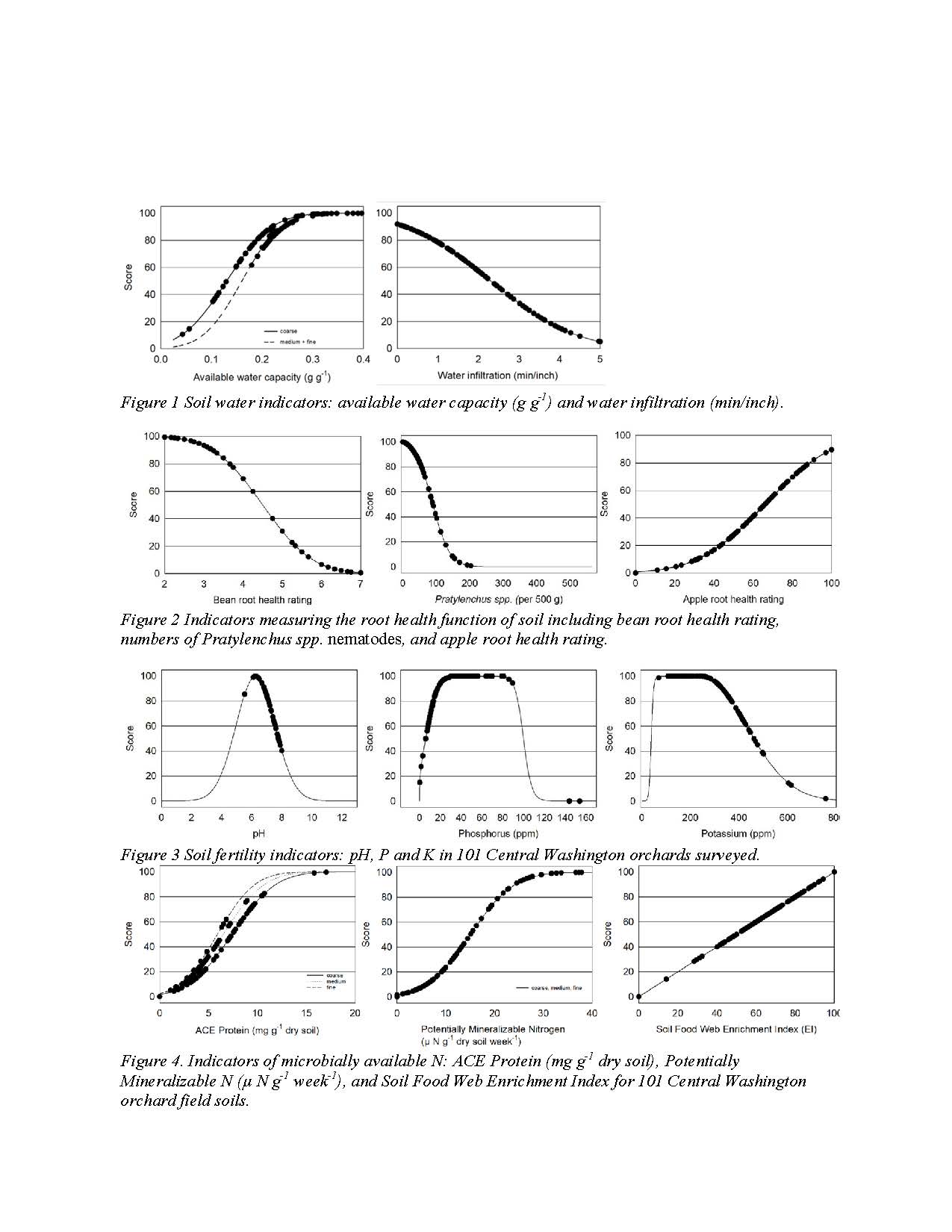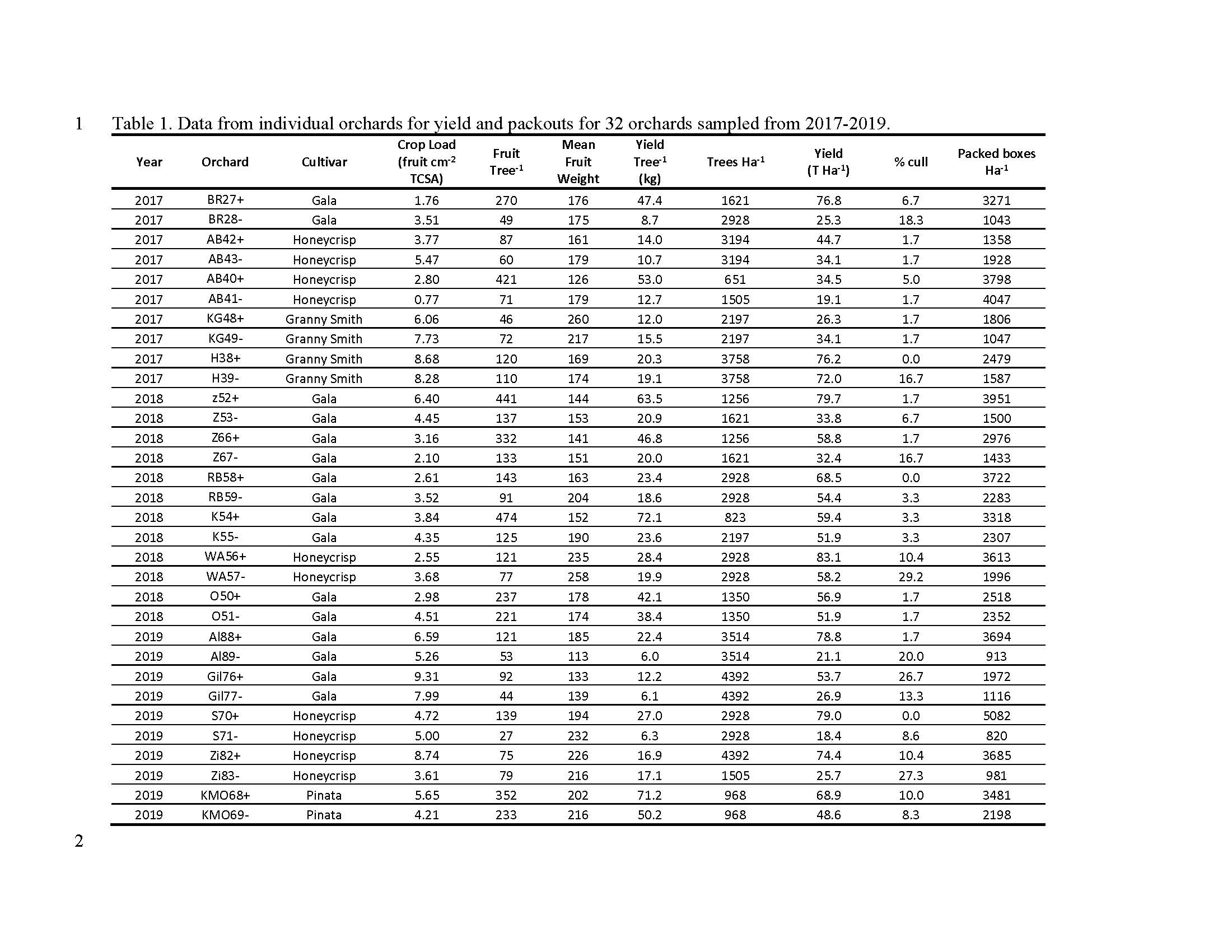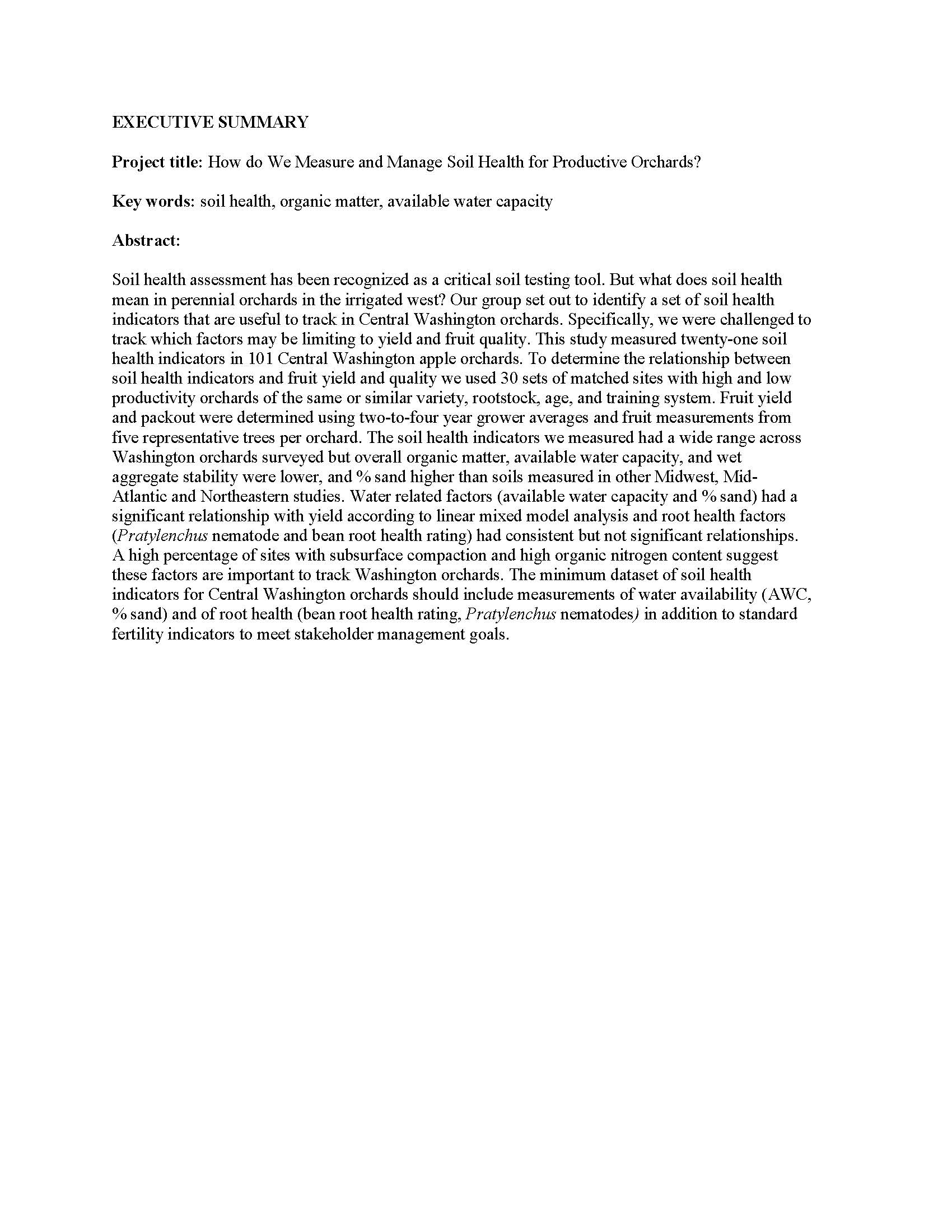How do we measure and manage soil health for productive orchards?
Author: S. Tianna DuPont, Lee Kalcsits
Published: 2021
Summary: Soil health assessment has been recognized as a critical soil testing tool. But what does soil health mean in perennial orchards in the irrigated west? Our group set out to identify a set of soil health indicators that are useful to track in Central Washington orchards. Specifically, we were challenged to track which factors may be limiting to yield and fruit quality. This study measured twenty-one soil health indicators in 101 Central Washington apple orchards. To determine the relationship between soil health indicators and fruit yield and quality we used 30 sets of matched sites with high and low productivity orchards of the same or similar variety, rootstock, age, and training system. Fruit yield and packout were determined using two-to-four year grower averages and fruit measurements from five representative trees per orchard. The soil health indicators we measured had a wide range across Washington orchards surveyed but overall organic matter, available water capacity, and wet aggregate stability were lower, and % sand higher than soils measured in other Midwest, Mid-Atlantic and Northeastern studies. Water related factors (available water capacity and % sand) had a significant relationship with yield according to linear mixed model analysis and root health factors (Pratylenchus nematode and bean root health rating) had consistent but not significant relationships. A high percentage of sites with subsurface compaction and high organic nitrogen content suggest these factors are important to track Washington orchards. The minimum dataset of soil health indicators for Central Washington orchards should include measurements of water availability (AWC, % sand) and of root health (bean root health rating, Pratylenchus nematodes) in addition to standard fertility indicators to meet stakeholder management goals.
Keywords:

